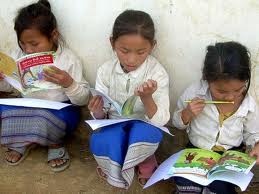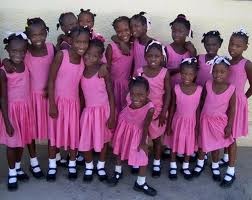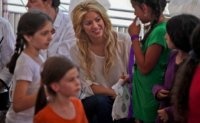


Education is the cornerstone to a better life for young girls. It impacts their heath, livelihood, and sense of well-being. For too long, there has been disparity in the level and quality of education in many cultures and countries between girls and boys. Even in the US, the study of mathematics and the sciences wasn’t considered a routine pursuit to those of my generation.
International Women’s Day is being celebrated on 8 March at the United Nations. One of the themes is empowerment, and there is no better highway to empowerment than education. (See my
current news event article yesterday, “Food for Thought & Women’s Empowerment”
diplomaticallyincorrect.org/films/blog_post/food-for-thought-and-womens-empowerment/46872
The UN Educational, Scientific and Cultural Organization (
UNESCO) has produced an atlas, the
World Atlas of Gender Equality, that is an educational roadmap of girls’ and boys’ curricula, the variations between the sexes measuring access, participation, and progression. Parts of Africa, particularly sub-Saharan, and South and West Asia still suffer from lack of access to
secondary education, particularly for girls, whereas two-thirds of countries have achieved
gender parity since 1990 at the primary level.
UN News Centre Source
Said UNESCO Director-General Irina Bokova: “This atlas is a call for action. The growth in girls’ enrollment in primary education is a clear demonstration of strong political will to achieve the education for all goals. But there are still great strides to be made in order to reach the large numbers of vulnerable girls and women who continue to be denied their right to education. We must address the root causes of this discrimination and target our action towards those most in need.”
The atlas reflects patterns in education by visualizing a series of data, including the school-life expectancy (SLE), which is the average number of years of education that a boy or a girl entering the system can expect to receive. In the Arab States for example, girls are likely to spend 10 years in schools while boys still have an advantage with having at least one extra year for instruction.
“These data reflect the commitment of governments and the international community to close the gender gap in education, but there is a tremendous difference between gender parity and
gender equality,” said Hendrik van der Pol, Director of the UNESCO Institute for Statistics. The atlas also shows how access to education may not always translate into better opportunities for women in terms of employment and income.
The print edition of the atlas, available in English, French and Spanish, will be accompanied by an online data mapping tool that will enable users to track trends over time, adapt the maps and export the data.
The sky is the limit for young women IF an adult world can move beyond the ABC’s of education to fulfilling young women’s dreams of gender parity, gender equality, and universal human dignity.
---By Susan Sacirbey
Become a Facebook Friend: “Susan Sacirbey” and “Diplomatically Incorrect”
Follow on TWITTER @DiplomaticallyX
See our
film online videos “Shakira in Jerusalem”
diplomaticallyincorrect.org/films/movie/shakira-in-jerusalem/27486 and “Women of Science - UNESCO L’OREAL Awards”
diplomaticallyincorrect.org/films/movie/women-of-science-unescoloreal-awards/25375
See our
Popular Video blogs & Current News Event Articles on United Nations Channels
diplomaticallyincorrect.org/c/united-nations





